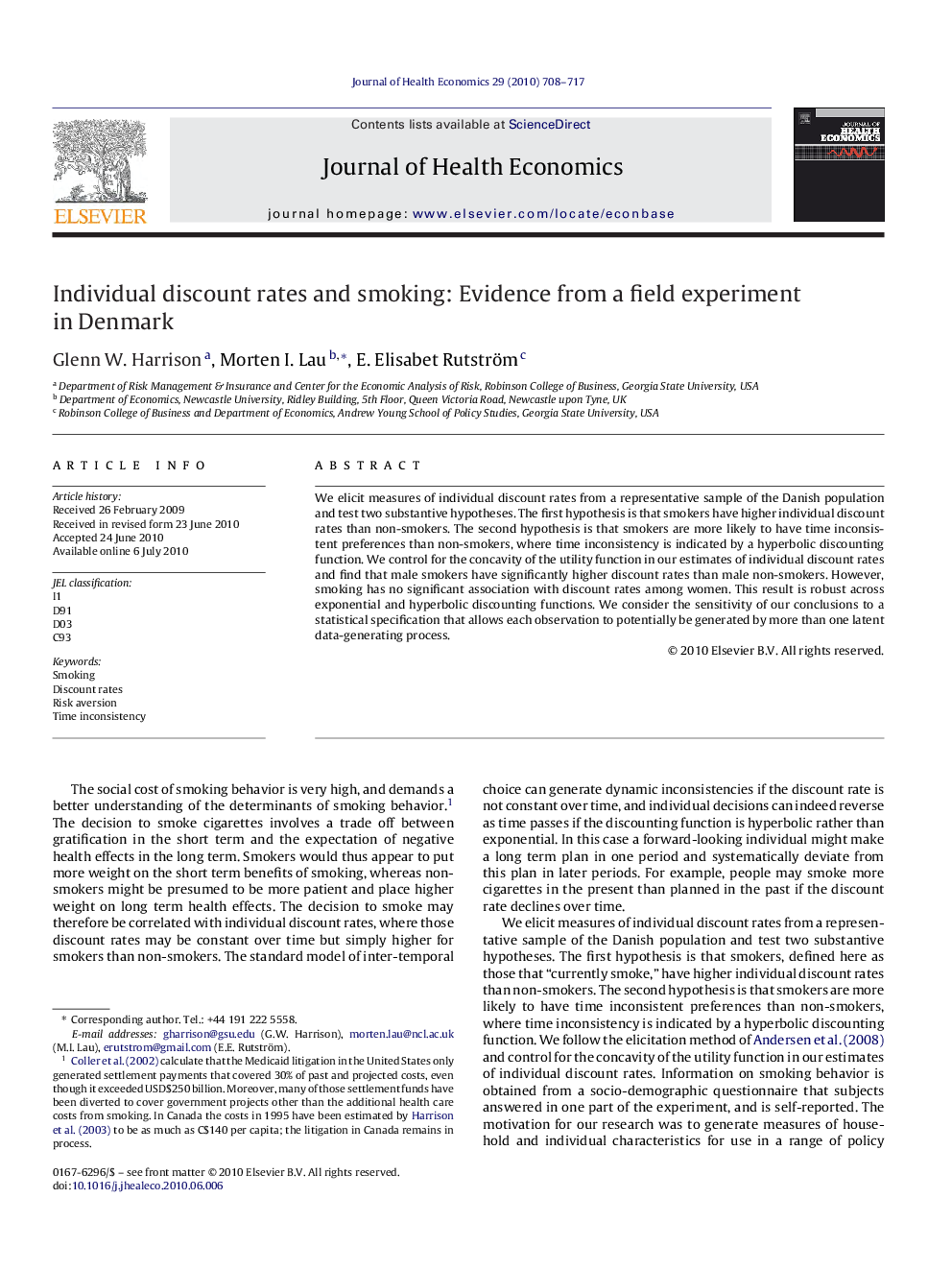| Article ID | Journal | Published Year | Pages | File Type |
|---|---|---|---|---|
| 961243 | Journal of Health Economics | 2010 | 10 Pages |
Abstract
We elicit measures of individual discount rates from a representative sample of the Danish population and test two substantive hypotheses. The first hypothesis is that smokers have higher individual discount rates than non-smokers. The second hypothesis is that smokers are more likely to have time inconsistent preferences than non-smokers, where time inconsistency is indicated by a hyperbolic discounting function. We control for the concavity of the utility function in our estimates of individual discount rates and find that male smokers have significantly higher discount rates than male non-smokers. However, smoking has no significant association with discount rates among women. This result is robust across exponential and hyperbolic discounting functions. We consider the sensitivity of our conclusions to a statistical specification that allows each observation to potentially be generated by more than one latent data-generating process.
Related Topics
Health Sciences
Medicine and Dentistry
Public Health and Health Policy
Authors
Glenn W. Harrison, Morten I. Lau, E. Elisabet Rutström,
